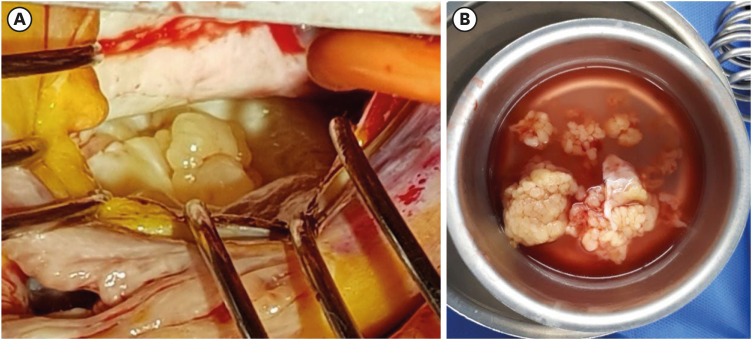J Korean Med Sci.
2023 Dec;38(50):e421. 10.3346/jkms.2023.38.e421.
Rare Cause of Exertional Angina
- Affiliations
-
- 1Department of Cardiology, Ajou University School of Medicine, Suwon, Korea
- 2Department of Thoracic and Cardiovascular Surgery, Ajou University School of Medicine, Suwon, Korea
- KMID: 2549962
- DOI: http://doi.org/10.3346/jkms.2023.38.e421
Figure
Reference
-
1. Peters PJ, Reinhardt S. The echocardiographic evaluation of intracardiac masses: a review. J Am Soc Echocardiogr. 2006; 19(2):230–240. PMID: 16455432.2. Basso C, Rizzo S, Valente M, Thiene G. Prevalence and pathology of primary cardiac tumours. Cardiovasc Med. 2012; 15(1):18–29.
- Full Text Links
- Actions
-
Cited
- CITED
-
- Close
- Share
- Similar articles
-
- A case of complete atrioventricular block persisting for 5 days in a patient with variant angina
- Significance of ST-Segment Level, ST-Segment Slope, ST-Segment Index and ST-Segment Integral in Exercise ECG as an Indicator of Myocardial Ischemia
- Complex Coronary Artery Fistula Causing Angina is Resolved Through Coil Embolization
- A Case of Ludwig Angina
- A Case of Cogan's Syndrome With Angina




